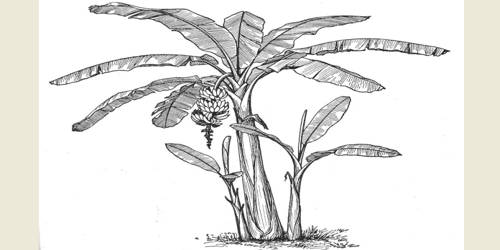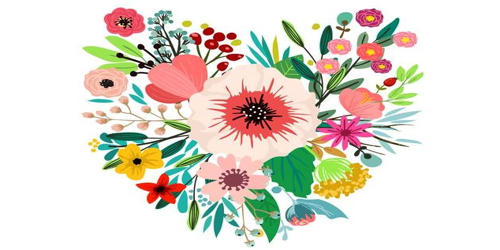The Banana Tree
Introduction: The banana tree is a very common tree in our country. It is not technically a tree but is instead a large herb. It grows in some other countries in Asia and Latin America also.
Description: The banana tree is not really a tree. Its trunk is made of many barks. Its body has no wood. The barks are one upon another and thus they make the body. The barks are soil like a sponge. The tree has no branches. It has big and broad leaves at the top. Most of the banana produced is consumed inside the country. Half of it is used as a vegetable while ripe banana is a nourishing fruit. The tree is light green. It looks pretty.
How grown: The tree does not grow from seeds. Shoots come out from old banana trees. These shoots are taken out of the mother tree. Holes are made into the ground some six or seven cubits apart. Then’ the young shoots are placed in these holes. The foot of the plant is covered with loose earth. The plant of banana requires a hot and humid climate. Temperature conditions between 25°C-30°C (not less than 11°C), annual rainfall above 150 cm, and well-drained clayey soils rich in humus are best suited to the crop. Male and female flowers are borne in a cluster at the tip of the stem; female flowers eventually mature into the banana fruits. The tree grows quickly but it does not grow in water. With proper cultural care and acceptable environmental conditions, bananas should be able to yield fruit that may depend on the specific banana type, be palatable.
Its fruit: The tree gives fruit only once and then it dies. All banana plants can produce edible fruit, but the fruit taste, seediness, color, size, and other characteristics depend on the species or variety. At the very top of the plant their conies out a cluster with some fifty or more fruits on it. In shape and size, they look like tiny fingers. Day by day they grow bigger and thicker. When one or two of the fruits look yellow, the bunch is cut off and kept in the house. After sonic days many of the fruits ripen and become soft. Then they are fit for eating. Ripe bananas have a nice smell. They are tasteful and nutritious.
Uses: The banana tree itself is of no great use to us. Banana leaves are commonly used as plants, for wrapping food and as an eye-shade or for protection from the rain. Boys make a raft with it. The banana pseudostem can be utilized for its fiber. Its dry leaves may also be used as fuel. But it does us the greatest good with its fruits. The pulp can be used to manufacture rope, paper, placemats, and other goods, but the pseudostem is often most valuable economically if it is chopped and left in a field for its organic matter content. Banana plants may also be used for a number of non-food purposes. All parts of the banana have medicinal value.
Conclusion: Bananas are much in demand. So, the cultivation of banana trees can bring us money. Today it is an important fruit in the tropical regions of the world. Banana is rich in minerals and vitamins.
















